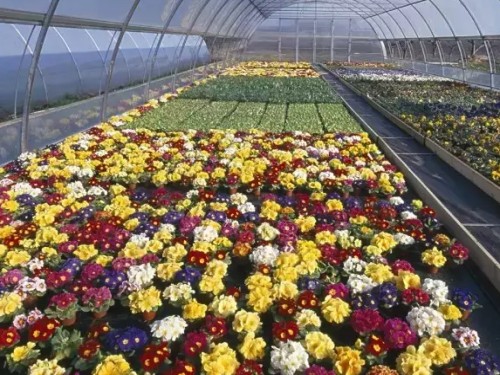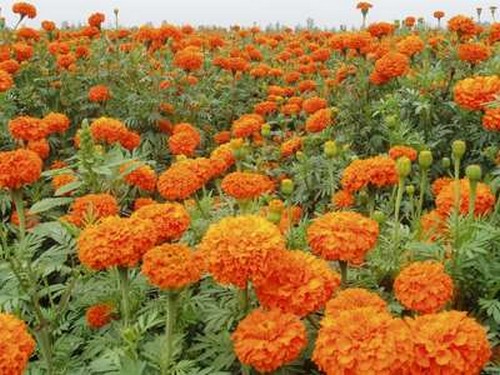Control methods of flowering period of Garden Flowers what are the regulation methods of flowering period
At present, the basic basis of flowering regulation is to change or interfere with some clear internal or ecological factors related to flowering time and flowering process through the understanding of plant flowering and flowering mechanism, mainly by regulating external factors. in order to control the time of flowering. At present, it is known that all the ecological factors that affect the growth and development of flowers will affect the flowering period. The important factors related to plant flowering are vegetative growth before flowering, nutrient supply, body water status, temperature, photoperiod (photoperiod) and growth regulators. Different flowers have different dominant factors that determine flowering. Second, through the understanding of plant dormancy mechanism, control the internal and external factors that affect dormancy, delay or break dormancy, control growth rhythm (thythm), and achieve flowering control. The main external factors affecting flowering process and dormancy are temperature, photoperiod, application of growth regulators and so on.

Florescence control, also known as protracted flowering, is the use of man-made measures to make flower cultivation bloom regularly outside the natural flowering period, such as making all kinds of flowers bloom evenly in the four seasons, and making flowers of different flowering periods bloom centrally in the same period to supply the needs of the festival. so that some flowers bloom once a year into multiple blossoms in a year, that is, "urge a hundred flowers in a moment, gather the four seasons in a time". The flowering stage is earlier than the natural flowering stage is called facilitative cultivation, and the delayed flowering period is called inhibitory cultivation.
For some annual flowers or plants, the method of staging or can be used to make the flowering early and late. The flowering period can also be controlled by pruning, coring and other measures. If the stump branches are often cut off, they can blossom again after the branches are renewed, and the flowering can be delayed by picking the heart before flowering.
[light adjustment]
Long sunshine flowers in the season of short sunshine. Using electric lamp to supplement light can blossom early, and if short-day treatment is given, it will inhibit flowering; short-day flowers can promote flowering by shading short-day treatment in the season of long sunshine, on the contrary, if long-term sunshine treatment is given, it will inhibit flowering. Generally speaking, the flowers that bloom in spring and summer are mostly long-day flowers, and those in autumn and winter are mostly short-day flowers. In order to make some flowers which can differentiate flower buds and blossom early under short-day conditions, the daily light time must be shortened in advance. Light regulation should be supplemented by other measures in order to achieve the desired purpose, such as the vegetative growth of flowers must be improved, branches should be close to the length of flowering, axillary buds and terminal buds should be full, and the application of phosphorus and potassium fertilizer should be strengthened in maintenance. stop the application of nitrogen fertilizer, in order to prevent excessive growth, otherwise it is disadvantageous to the differentiation of flower buds and the formation of flower buds.
Long-day treatment:
- Prev

How to make Calendula grow luxuriantly and blossom in four Seasons during flowering and Fruit stage
Calendula is a common potted flower in the family, which blossoms in the pot, which is definitely not the ultimate goal of flower lovers. It is more enjoyable to have luxuriant branches and leaves. How to make the marigold grow luxuriantly and blossom in all seasons? [starting from seed selection] planting Calendula
- Next

Under what circumstances do you need to extend the flowering period of garden flowers?
At present, the basic basis of flowering regulation is to change or interfere with some clear internal or ecological factors related to flowering time and flowering process through the understanding of plant flowering and flowering mechanism, mainly through the regulation of external factors.
Related
- Fuxing push coffee new agricultural production and marketing class: lack of small-scale processing plants
- Jujube rice field leisure farm deep ploughing Yilan for five years to create a space for organic food and play
- Nongyu Farm-A trial of organic papaya for brave women with advanced technology
- Four points for attention in the prevention and control of diseases and insect pests of edible fungi
- How to add nutrient solution to Edible Fungi
- Is there any good way to control edible fungus mites?
- Open Inoculation Technology of Edible Fungi
- Is there any clever way to use fertilizer for edible fungus in winter?
- What agents are used to kill the pathogens of edible fungi in the mushroom shed?
- Rapid drying of Edible Fungi

